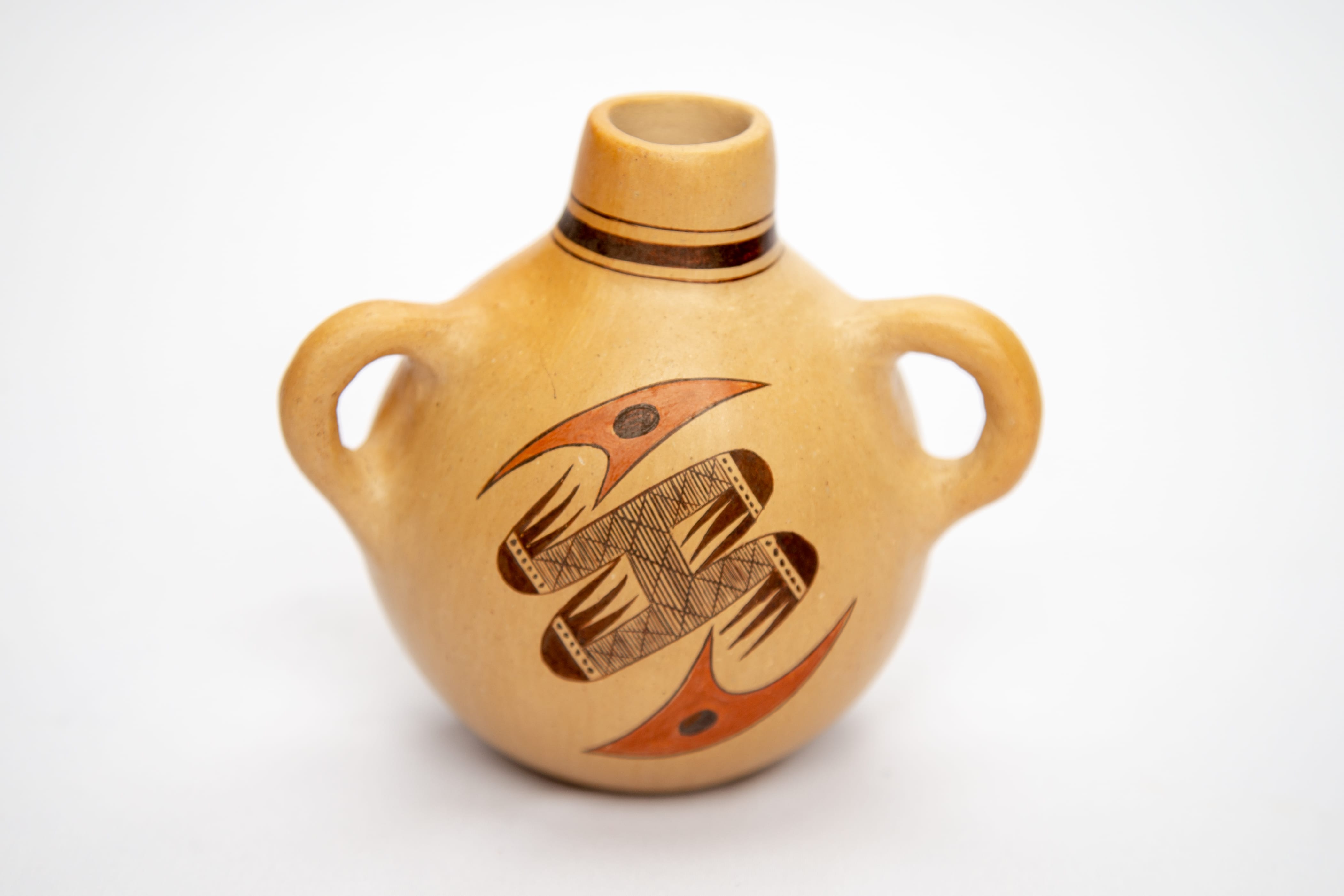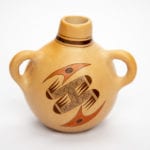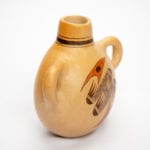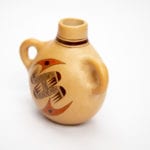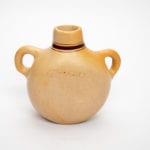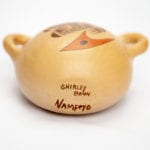The width includes two 0.75″ handles. The canteen is 3.4375 ” deep (front to back).
The form of this canteen is flat-bottomed, thick-walled and ordinary.
A thick black line encircles the spout, flanked by two thin lines: simplicity. The two red elements with a central black dot frame the central design and are unusual and interesting, but not spectacular.
What is extraordinary is the fine detail of this central motif. Shirley and her husband live at Zuni, are primarily jewlers and specialize in the fine chanel inlay characteristic of that pueblo. The same concern with fine, detailed elements is found on all of Shirley’s pottery in this collection. (See “Artist List.”) About 75 vertical parallel lines fill the small space between the hooked elements that cap the design, a distance of about 1.25 inches. The space between these lines remains open; the lines do not touch. Crossing these lines at an angle are what appear to be more widely-spaced lines, thus forming a series of parallelograms. With magnification, however, the angled lines that run from lower left to upper right resolve themselves into a series of tiny squares placed between the vertical lines. The other angled lines are formed of simple brush strokes. Such detail is not noticed except under magnification, but the overall effect impreses the eye.
The central monochromatic design is frequently found on Nampeyo family pots and is refered to as a “fine-line migration design with bear claws.” The four solid “bear claw” caps on the ends of the design are precisely drawn. Inbeded in these end elements are open spaces filled with a series of dots, 6 dots in three of these spaces, 7 dots in the other. I can’t imagine most people would notice this variation, but perhaps, like her great-grandmother Nampeyo, Shirley intends a bit of imbalance to give her design energy.
The bear claw caps on the fineline design thrust in contrary directions, as do the two red elements that flank the central motif. There’s a lot of contrary motion here, but each element is counterbalanced by another. My eye recognizes the energy on the design but remains focused on the center of the pot. The design looks simple and complicated at the same time, an impression one also has of Nampeyo of Hano’s best pots. I don’t think its accidental that such fine work is by the hand of a jewler. The design is as carefully crafted as a fine gemstone broach.

